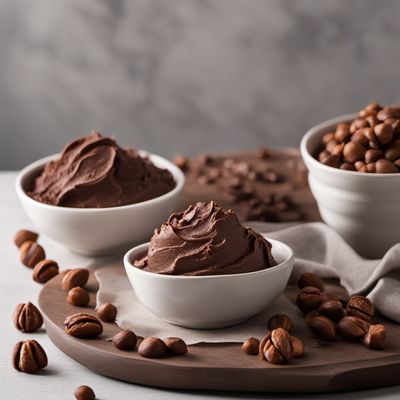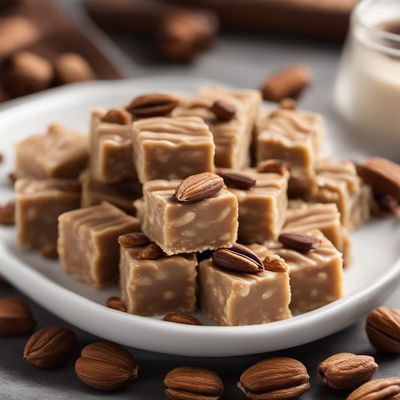
Ingredient
Hazelnuts
Nutty Delights
Hazelnuts are small, round nuts with a hard outer shell that encases a creamy, pale brown kernel. They have a distinct buttery flavor and a crunchy texture. Hazelnuts are commonly used in baking, confectionery, and cooking, as they add a delightful nuttiness and a satisfying crunch to a variety of dishes.
Origins and history
Hazelnuts have a long history and are believed to have originated in Asia Minor, present-day Turkey. They have been cultivated for thousands of years and have played a significant role in various cuisines and cultures. Hazelnuts were highly valued by the ancient Greeks and Romans, who considered them a symbol of fertility and abundance. Today, they are widely cultivated in many countries around the world, including the United States, Turkey, and Italy.
Nutritional information
Hazelnuts are a nutrient-dense food, rich in healthy fats, protein, dietary fiber, vitamins, and minerals. They are particularly high in vitamin E, which acts as an antioxidant in the body. Hazelnuts are also a good source of monounsaturated fats, which can help promote heart health. However, they are calorie-dense, so portion control is important when incorporating them into a balanced diet.
Allergens
May contain traces of other tree nuts.
How to select
When selecting hazelnuts, look for ones that are plump, firm, and free from cracks or holes. The shells should be intact and not rancid. It is recommended to purchase hazelnuts in their shell to ensure freshness. If buying shelled hazelnuts, choose ones that are vacuum-sealed or stored in airtight containers to maintain their quality.
Storage recommendations
Hazelnuts should be stored in an airtight container in a cool, dry place, away from direct sunlight. They can be refrigerated to extend their shelf life, but it is important to bring them to room temperature before using to enhance their flavor. Hazelnuts can also be frozen for long-term storage.
How to produce
Hazelnut trees can be grown in temperate climates and require well-drained soil and full sun exposure. They can be propagated from seeds or purchased as young saplings from nurseries. It is important to provide adequate water and regular pruning to maintain tree health and promote optimal nut production.
Preparation tips
To prepare hazelnuts for use, they can be roasted to enhance their flavor and loosen the skins. This can be done by spreading the nuts in a single layer on a baking sheet and roasting them in a preheated oven at 350°F (175°C) for about 10-15 minutes, or until the skins start to crack. Once roasted, the skins can be removed by rubbing the nuts in a clean kitchen towel. Hazelnuts can be enjoyed as a snack, used as a topping for salads or desserts, ground into a paste for spreads or sauces, or incorporated into various recipes, such as cakes, cookies, and savory dishes.
Substitutions
Almonds, walnuts, or pecans can be used as substitutes for hazelnuts, although they will impart a slightly different flavor to the dish. Almonds have a similar texture and a mild, slightly sweet taste, while walnuts have a stronger, earthy flavor. Pecans have a sweeter and richer taste compared to hazelnuts.
Culinary uses
Hazelnuts are widely used in both sweet and savory dishes. They can be ground into a paste to make homemade Nutella or used as a key ingredient in pralines, truffles, and other confections. Hazelnuts can also be chopped and added to salads, roasted vegetables, or used as a coating for meats or fish. In baking, they are commonly used in cookies, cakes, and pastries to add a nutty flavor and a crunchy texture.
Availability
Hazelnuts are commonly cultivated in countries such as Turkey, Italy, the United States, and Spain. They are also available in many other regions, either imported or grown locally.
More ingredients from this category
Recipes using Hazelnuts » Browse all

Bacio di Pantelleria Swiss Style
Swiss Chocolate Hazelnut Delight

Homemade Hazelnut Chocolate Gelato
Decadent Nutella Gelato: A Creamy Hazelnut Chocolate Delight

Xató Sauce Recipe
Savory Spanish Xató Sauce: A Flavorful Delight for Your Palate

Ligurian Nutella Truffles
Delizie di Nocciola: Ligurian Nutella Truffles

Bavarian Chocolate Hazelnut Torte
Decadent Delight: Bavarian Chocolate Hazelnut Torte

Baci di Dama - Italian Hazelnut Cookies
Heavenly Hazelnut Delights: Baci di Dama Recipe

Bavarian Florentines
Bavarian Almond Delights

Pacific Northwest Hoorische
Wild Salmon-Stuffed Hoorische with Hazelnut Pesto

Certosino - Italian Christmas Fruitcake
Festive Delight: A Decadent Italian Christmas Fruitcake

Buñuelos de Bacalao with Romesco Sauce
Crispy Cod Fritters with Tangy Romesco Sauce

Malian Hazelnut Delight
Nocciola Maliana: A Nutty Delight from Mali

Bavarian Baklava
Bavarian Honey Nut Pastry Delight